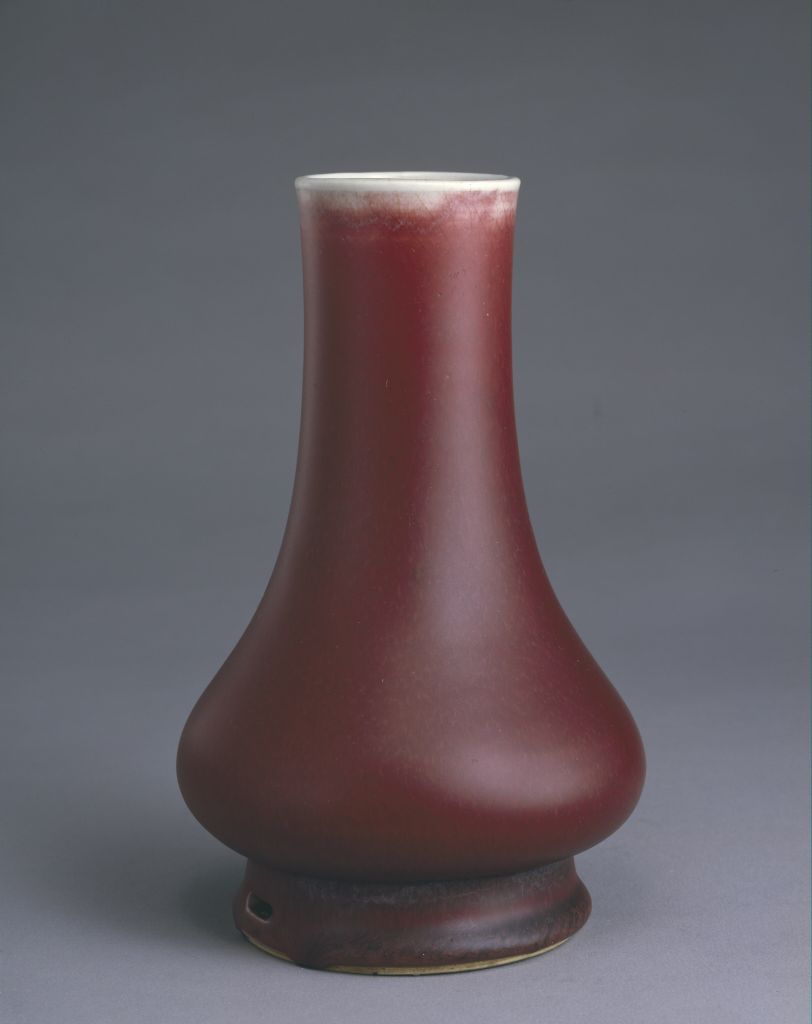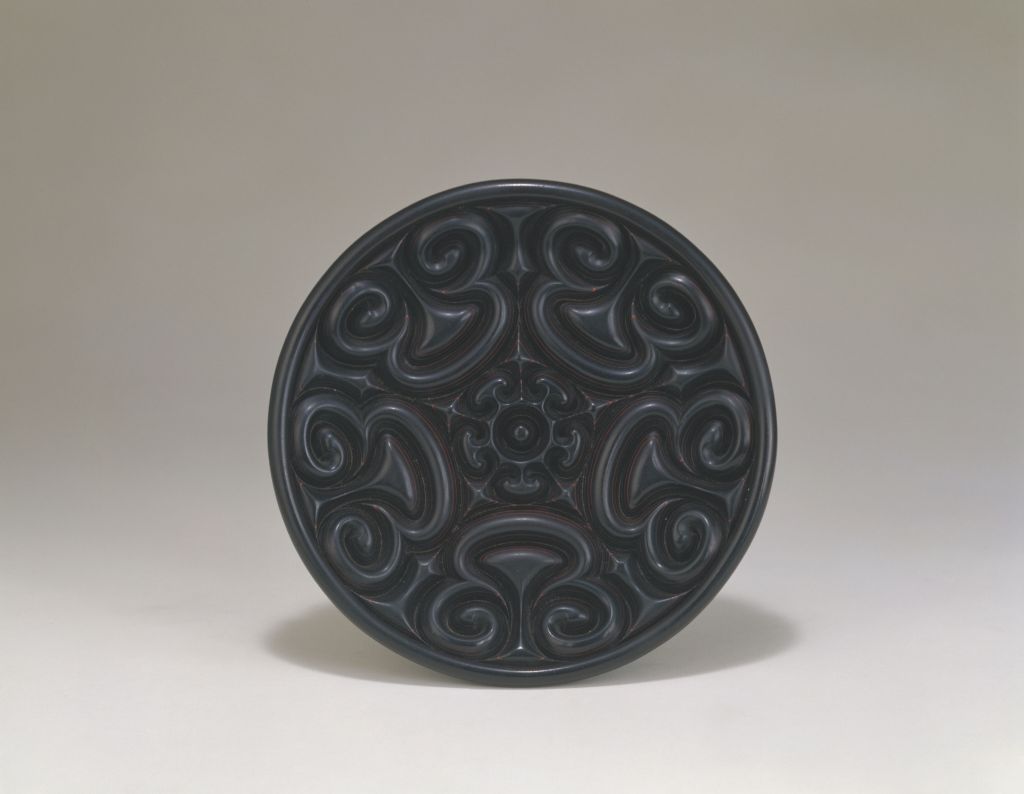(以上图片分别来自:陶瓷,漆器,剪纸,苏绣,木雕,玉雕,面塑,琉璃,铁画)
陶瓷 Porcelain
中国是瓷器的故乡,瓷器是古代劳动人民的一个重要的创造。瓷器的前身是原始青瓷,它是由陶器向瓷器过渡阶段的产物。陶瓷艺术装饰形式从唐、宋、元、明、清到现代可分二类:一类是写意绘画,另一类是工笔绘画。陶瓷艺术是艺术与科学的结晶。陶瓷器皿在实用的前提下,具有造型规整、装饰多样、内涵丰富的特点,陶瓷艺术装饰经过数千年的探索与实践已发展得相当完备,其装饰形式基本可以归纳为釉下彩、釉上彩、釉中彩、颜色釉和综合装饰五大类。
China is the birthplace of porcelain, which was an important creation of the ancient people. The predecessor of porcelain was the primitive celadon, the product of the transitional stage from pottery to porcelain. The forms of ceramic art decoration can be divided into two categories from the Tang, Song, Yuan, Ming, and Qing Dynasties to modern times: freehand painting and meticulous painting. Ceramic art is the crystallization of art and science. On the premise of being practical, ceramic vessels have the characteristics of regular shapes, diverse decorations, and rich connotations. After thousands of years of exploration and practice, ceramic art decoration has developed quite comprehensively, and its decorative forms can basically be summarized into five categories: underglaze color, overglaze color, in-glaze color, colored glaze, and comprehensive decoration.
漆器 Lacquerware
漆器是以木或其它材料造型,经髹漆而成的器物,具有实用功能和欣赏价值。中国是世界上最早认识漆的特性并将漆调成各种颜色,用作美化装饰之用的国家。早在六七千年前的河姆渡文化中,考古工作者就发现了一只木胎红色漆碗,由此揭开了中国漆器制造史上光辉的第一页。中国的漆器具有相当高的工艺水平和研究价值,是世界工艺美术品的重要组成部分。
Lacquerware refers to objects shaped from wood or other materials and then lacquered, possessing both practical functions and ornamental value. China is the first country in the world to recognize the properties of lacquer and mix it into various colors for the purpose of beautification and decoration. As early as six to seven thousand years ago in the Hemudu Culture, archaeologists discovered a red lacquered wooden-bodied bowl, thus unveiling the glorious first page in the history of Chinese lacquerware manufacturing. Chinese lacquerware has a considerably high level of craftsmanship and research value, and it is an important part of the world’s arts and crafts.
剪纸 Paper cuttings
中国剪纸是用剪刀或刻刀在纸上剪刻花纹,用于装点生活或配合其他民俗活动的一种民间艺术。在中国,剪纸具有最广泛的群众基础,它交融于各族人民的社会生活,是各种民俗活动的重要组成部分。2009年,中国剪纸列入联合国教科文组织《保护非物质文化遗产公约》人类非物质文化遗产代表作名录。而且按照地区及民族划分,剪纸还有这不同的风格。
Chinese paper-cutting is a folk art in which patterns are cut or engraved on paper with scissors or engraving knives to decorate life or accompany other folk activities. In China, paper-cutting has the broadest mass base. It is integrated into the social lives of people of all ethnic groups and is an important part of various folk activities. In 2009, Chinese paper-cutting was included in the Representative List of the Intangible Cultural Heritage of Humanity of the UNESCO Convention for the Protection of Intangible Cultural Heritage. Moreover, divided by region and ethnicity, paper-cutting also has different styles.
刺绣 Embroidery
刺绣,又名”针绣”,俗称”绣花”。以绣针引彩线(丝、绒、线),按设计的花样,在织物(丝绸、布帛)上刺缀运针,以绣迹构成纹样或文字。中国刺绣主要有苏绣、湘绣、蜀绣和粤绣四大门类。苏绣以精细、雅洁著称,图案秀丽,色泽文静,针法灵活,形象传神。湘绣以写实为主,色彩明快,风格豪放,特别擅长绣制狮虎等动物。粤绣布局满、图案繁茂、用色富丽、对比强烈,以华丽效果著称。蜀绣形象生动,色彩艳丽,富有立体感,针法变化丰富,针脚整齐。
Also known as “needle embroidery” and commonly called “embroidering”. With an embroidery needle leading colored threads (silk, velvet, thread), according to the designed patterns, stitches are made on fabrics (silk, cloth) to form patterns or characters with the embroidery traces. There are mainly four major categories of Chinese embroidery: Suzhou embroidery, Hunan embroidery, Sichuan embroidery, and Guangdong embroidery.
Suzhou embroidery is renowned for its fineness, elegance, and neatness. Its patterns are beautiful, the colors are gentle and quiet, the stitching methods are flexible, and the images are vividly portrayed.
Hunan embroidery mainly focuses on realism. It has bright colors, a bold and unrestrained style, and is especially skilled in embroidering animals such as lions and tigers.
Guangdong embroidery features a full layout, lush patterns, rich colors, strong contrasts, and is famous for its gorgeous effects.
Sichuan embroidery has vivid images, bright colors, a strong sense of three-dimensionality, rich variations in stitching methods, and neat stitches.
木雕 Wood carving
中国木雕艺术起源于新石器时期,七千多年前的浙江余姚河姆渡已有木雕品。木雕分工艺木雕和艺术木雕两大类。其中工艺木雕又可分为观赏性和实用性两种。由于各地的民俗、文化和资源条件,取材不一,工艺不同,形成了诸多具有浓郁地方特色、各有千秋的的流派。这些木雕流派在全国或者当地都极具影响力,而最为著名的是东阳木雕、乐清黄杨木雕、广东潮州金漆木雕、福建龙眼木雕,这四大流派被称为“中国四大木雕”。
The art of Chinese wood carving originated in the Neolithic period. There were already wood carvings in Hemudu, Yuyao, Zhejiang more than seven thousand years ago. Wood carvings can be divided into two major categories: craft wood carvings and artistic wood carvings. Craft wood carvings can be further divided into two types: for ornamental purposes and for practical use. Due to the different folk customs, cultures, and resource conditions in various places, the materials used and the techniques employed are not the same, thus giving rise to many schools with strong local characteristics and their own unique features. These wood carving schools are highly influential both nationwide and locally. The most famous ones are Dongyang wood carving, Yueqing boxwood wood carving, Guangdong Chaozhou gold lacquer wood carving, and Fujian longan wood carving. These four major schools are known as the “Four Great Wood Carvings of China”.
玉雕 Jade carving
玉雕是中国传统的雕刻艺术之一,以其精湛的工艺和深厚的文化底蕴而闻名。这种艺术形式源远流长,可以追溯到新石器时代,至今已有数千年的历史。玉雕工艺不仅要求工匠具备高超的技艺,还要求他们对玉石的质地、颜色和纹理有深刻的理解和把握。在中国,玉雕流派众多,各具特色,如细腻温婉的苏派、豪放大气的北派、精巧雅致的扬派等,它们共同构成了中国玉雕艺术的丰富多样性。玉雕作品不仅具有很高的艺术价值和收藏价值,还蕴含着吉祥如意、平安富贵等美好寓意,深受人们的喜爱和珍视。
Jade carving is one of the traditional carving arts in China, renowned for its exquisite craftsmanship and profound cultural heritage. This art form has a long and storied history, dating back to the Neolithic Age, with thousands of years of evolution. The craft of jade carving not only demands exceptional skills from artisans but also requires a deep understanding and mastery of the texture, color, and veins of the jade. In China, there are numerous schools of jade carving, each with its unique characteristics, such as the delicate and gentle Su style, the bold and grand Northern style, and the exquisite Yangzhou style, which together form the rich diversity of Chinese jade carving art. Jade carvings are not only of high artistic and collectible value but also embody auspicious meanings like good fortune and wealth, making them beloved and cherished by many.
面塑 Dough modelling
面塑,俗称捏面人,是以面粉为主料,将其调成不同颜色,用手和简单工具塑造成各种栩栩如生的形象的传统艺术。 它是源于山东、山西和北京的中国民间传统艺术之一,其特点是颜色丰富、造型优美,体积较小、便于携带,材料便宜,是珍贵的非物质文化遗产。中国的面塑艺术早在汉代就已有文字记载,经过几千年的传承和经营,可谓是历史渊源流长,早已是中国文化和民间艺术的一部分。也是研究历史、考古、民俗、雕塑、美学不可忽视的实物资科。就捏制风格来说,黄河流域古朴、粗扩、豪放、深厚;长江流域却是细致、优美、精巧。在面塑艺术的发展过程中,穆李村面塑艺人走南闯北,影响全国,逐渐形成了三大流派,即山东菏泽的李派、北京的汤派、上海的赵派,三派各具特色。
Dough modelling, commonly known as dough figurine making, is a traditional art that mainly uses flour as the main material. The flour is mixed into different colors and then shaped into various vivid images by hand and with simple tools. It is one of the traditional folk arts in China originating from Shandong, Shanxi and Beijing. It is characterized by rich colors, beautiful shapes, small size, easy portability and inexpensive materials, and it is a precious intangible cultural heritage. Written records about the art of dough modelling in China date back to as early as the Han Dynasty. After thousands of years of inheritance and development, it has a long history and has long been a part of Chinese culture and folk art. It is also physical material that cannot be ignored in the study of history, archaeology, folk customs, sculpture and aesthetics. In terms of the kneading style, the styles in the Yellow River Basin are simple, bold, unrestrained and profound, while those in the Yangtze River Basin are delicate, graceful and exquisite. During the development of the art of dough modelling, dough sculpture artists from Muli Village traveled all over the country and had an influence across the nation. Gradually, three major schools were formed, namely the Li School in Heze, Shandong, the Tang School in Beijing and the Zhao School in Shanghai, and each of the three schools has its own characteristics.
琉璃 Colored glaze
琉璃,这一源自中国古老技艺的瑰宝,制作工艺繁复而精妙。从精选石英砂、石灰石等原料,依秘方严谨配料起始,便踏上了匠心之旅。在熔炉中,需耐受超 1400℃高温,历经熔化、澄清、均化,使玻璃液纯净均匀。随后,吹制、压制、拉制或铸造等成型技法各显神通,全凭工匠巧手与丰富经验雕琢。退火消除应力,冷加工打磨抛光,方成就其晶莹剔透、造型多变之美。琉璃在中国文化里意义非凡,为佛教七宝,是宫殿庙宇装饰宠儿,它承载千年智慧,尽显东方典雅韵味。
Colored glaze, a gem from ancient Chinese craftsmanship, has a complex and exquisite production process. From carefully selecting raw materials such as quartz sand and limestone and precisely mixing them according to secret recipes, it embarks on a craftsmanship journey. In the furnace, it needs to withstand a high temperature of over 1400 °C and go through processes like melting, fining, and homogenization to make the glass liquid pure and uniform. Subsequently, various forming techniques such as blowing, pressing, drawing, or casting play their respective roles, all relying on the skillful hands and rich experience of craftsmen. Annealing is carried out to eliminate internal stress and cold processing like grinding and polishing is done to achieve its crystal-clear and diverse shapes. The colored glaze holds significant meaning in Chinese culture. It is one of the seven treasures of Buddhism and a favorite decorative element for palaces and temples. It carries thousands of years of wisdom and fully displays the elegant charm of the East.
铁画 Iron painting
铁画是用铁铸成线条,再将其焊接成画的一种工艺作品。其主要借鉴了国画的水墨、章法和布局,线条简明有力,苍劲古朴。铁画工艺综合了古代金银空花的焊接技术,吸取了剪纸、木刻、砖雕的长处,融合了国画的笔意和章法,画面明暗对比鲜明,立体感强,在古代工艺美术品中独树一帜。铁画既有国画黑白相间的风韵美,也有西画层次分明的立体美。铁画被视为中国独具风格的工艺品之一。它将民间剪纸、雕刻、镶嵌等各种艺术的技法溶为一体,采用中国画章法,黑白对比,虚实结合,另有一番情趣。铁画的种类很多:有人物木石,山川风景,花鸟草虫,总之凡能在纸上画出来的,铁画均可一展其风韵,至今人民大会堂还悬有巨幅铁画《迎客松》。铁画的制作起源于宋代,盛行于北宋。清代康熙年间,安徽芜湖铁画才自成一体,并逐渐享誉四海。
铁画的制作十分繁琐,又十分精细。其制作材料大都是一些毫无光泽的铁板,工匠们以锤代笔,将铁板敲出大致的形状,再精雕细琢,用剪刀剪出一些修饰物。最精细的工序是焊接,不同于一般焊接,铁画的焊接需要用纯银加上铜粉,逐点精细焊接,容不得丝毫疏忽。成型后的铁画仍需进行喷漆处理。喷漆前,铁画需先经酸水浸泡以彻底除锈,随后喷上黑漆,待漆面干燥后,将其固定于白色底板之上,如此,一幅完整的铁画才算大功告成。
Iron painting is a kind of handicraft work that is made by casting iron into lines and then welding them into paintings. It mainly draws on the ink and wash, composition, and layout of traditional Chinese painting. Its lines are concise, powerful, vigorous, and simple yet unsophisticated. The iron painting technique combines the ancient welding techniques of gold and silver openwork, absorbs the strengths of paper-cutting, wood carving, and brick carving, and integrates the brushwork and composition of traditional Chinese painting. The contrast between light and dark in the painting is sharp, and it has a strong three-dimensional effect, standing out uniquely among ancient arts and crafts. Iron painting has both the charm of the black-and-white style of traditional Chinese painting and the three-dimensional beauty with distinct layers of Western painting. Iron painting is regarded as one of the handicrafts with unique styles in China. It integrates various artistic techniques such as folk paper-cutting, carving and inlaying, adopts the composition of traditional Chinese painting, and combines black and white contrast with the integration of virtual and real, presenting a unique charm. There are many kinds of iron paintings, including figures, trees and rocks, landscapes, flowers, birds, insects and so on. In short, whatever can be drawn on paper can be shown in iron paintings with their unique charm. Up to now, a huge iron painting named “Welcoming Pine” is still hanging in the Great Hall of the People. The production of iron painting originated in the Song Dynasty and prevailed in the Northern Song Dynasty. During the reign of Emperor Kangxi in the Qing Dynasty, the iron painting in Wuhu, Anhui Province, finally formed its unique style and gradually became famous all over the world.
The production of iron painting is very complicated and meticulous. Most of its raw materials are dull iron plates. Craftsmen use hammers to knock the iron plates into rough shapes, and then carefully carve and polish them, and use scissors to cut out some decorative items. The most delicate process is welding. Different from ordinary welding, the welding of iron painting requires pure silver mixed with copper powder for meticulous welding point by point, allowing no slightest negligence. The formed iron painting still needs to be painted. Before painting, the iron painting needs to be soaked in acid water to completely remove rust, and then sprayed with black paint. After the paint is dry, it is fixed on a white base plate. In this way, a complete iron painting is finally completed.









